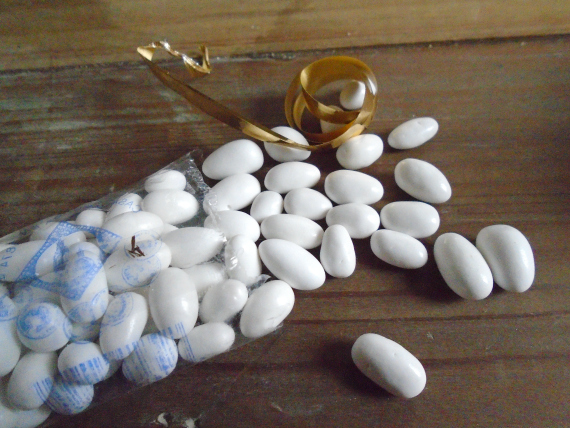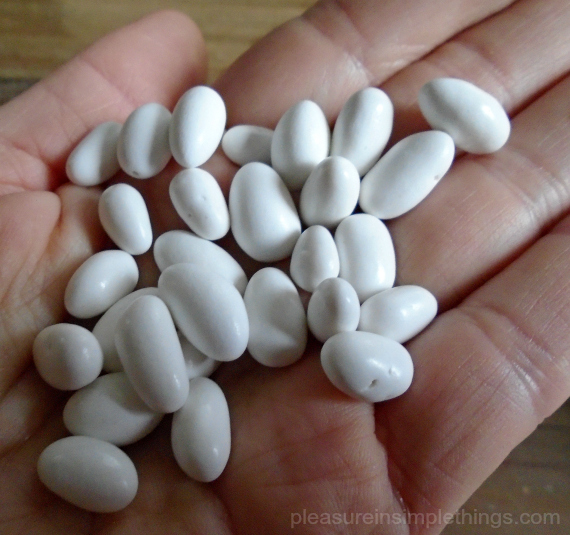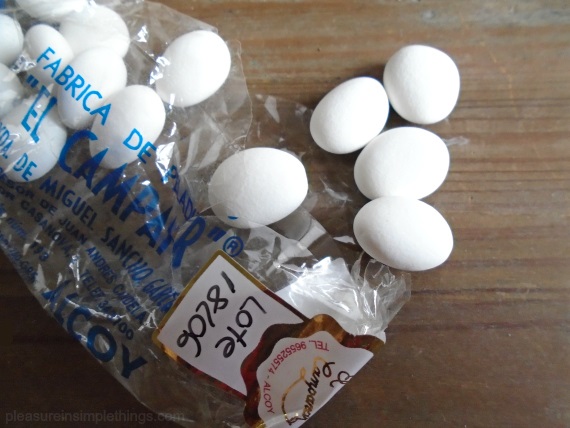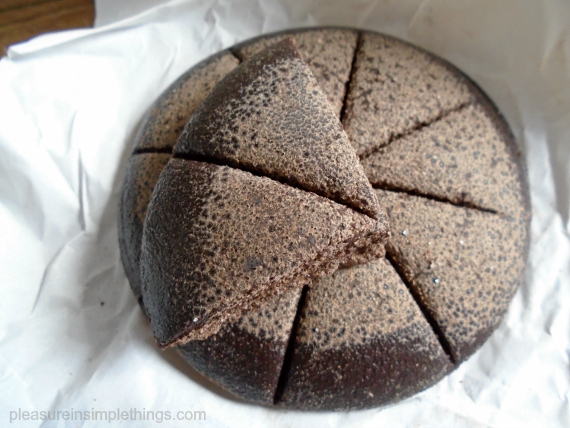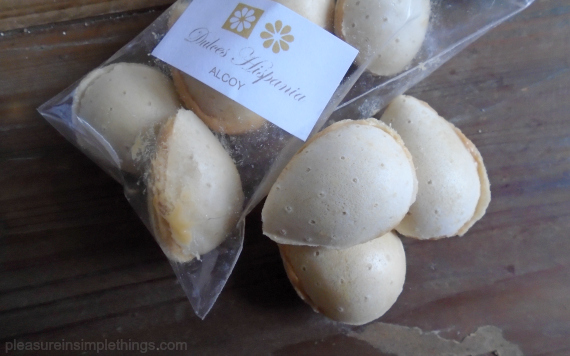One of the best things to happen to me during the holidays was visiting with a family I know from Spain who were in the U.S. on vacation. It had been a long, long time since we had been together and the visit was fabulous! If the time spent together wasn’t gift enough, I was also given some gifts brought from Spain by my friends. One of these gifts was an assortment of sweets from the area of Spain where my friends live. Very different from the typical candy consumed by Americans on a day-to-day basis, I’d like to tell you a little about the four tasty sweets I received from Spain!
These little white candies are labeled pinones. I knew right when I tasted them that they were pine nuts with a candy shell. Pine nuts (also called pignoli) are the edible seeds of pine trees. The most popular use of these teardrop-shaped, delicious little nuts here in the U.S. is in pesto. You may also see them adorning the tops of Italian almond cookies. If you’ve ever purchased them, you know they are one of the most expensive nuts on the market! Why so expensive? the answer lies in the time involved to grow the nuts and the effort to harvest the seeds from their protective encasement.
I have to think pine nuts are much more affordable in Spain than the U.S. I know pine nuts produced in Europe mostly come from the stone pine (Pinus pinea), which has been cultivated for its nuts for over 5,000 years, and harvested from wild trees for far longer.
In addition to pine nuts, the list of ingredients translated from the package of my candy pinones are just three – sugar, cinnamon, and corn starch. They are very tasty! Because of their texture and size, they remind me a little bit of candied sunflower seeds.
The second candy was easy to identify without tasting – probably because of its popularity at Italian weddings! These are candied almonds. Almonds are synonymous with Christmas throughout Europe. I found out that this is most obvious in Spain where almost every conceivable Christmas dish is a potential candidate for the addition of almonds. Spain is a large producer of extremely good quality hard-shelled Mediterranean almonds. They are harvested just a couple months before Christmas and the reason they are used so much is because they are fresh and must be eaten! The protein value in the nuts is recognized – there is a saying in Spain that a handful of almonds is worth a small beef steak!
The typical candied sweet, made from almonds coated in sugar, originates in Valencia and is often present on the Christmas table. The major producers of sugared almond in Spain are found in the towns of Casinos in Valencia and Alcoy in Alicante, where sugared almonds have been manufactured and exported from, using a traditional manufacturing process, for a least 2 centuries. My friends live in the town were the almonds were originated! I feel so lucky to taste the candies created from where they originated and made from recently harvested almonds! The freshness was so obvious and the sugared almonds were the first of the four packages of candies to disappear!
Since Spain is the birthplace of modern chocolate, I was excited to have some chocolate included in my collection of sweets from Spain. Spanish explorers first brought chocolate to Europe more than 500 years ago and they were the first to mix cocoa with sugar. The translated ingredients listed on my package of chocolate is sugar, cocoa, flour and cinnamon. The taste of this candy is nothing like what you would call chocolate here in the U.S. It has a very grainy consistency and a subtle flavor.
This last candy in the selection had no ingredients or description other than ‘Dulces Hispania’ or Spanish sweets. Reminiscent of old-time space saucer candies (remember those?), they have a wafer-like exterior and a soft, subtle almond flavor filling. It seems to me the filling must be marzipan. Because of the abundance of almonds, marzipan (almond paste) is popular at the holidays in Spain. The contrast of the textures in the candy is very appealing.
Thanks to my ‘sweet’ friends from Spain for all my gifts, but most importantly, for getting together with me. :)
Thanks for stopping by.
Remember to take pleasure in simple things, Jackie


